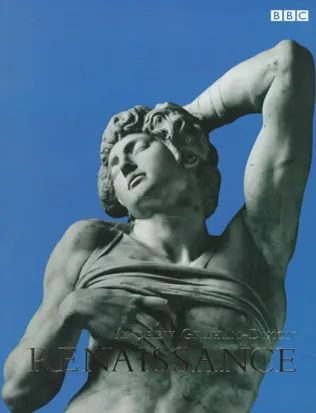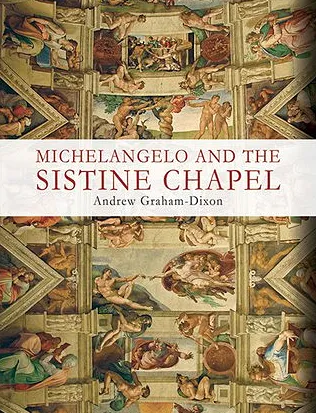In 1991, Andrew began his long collaboration with the BBC, in the course of which he has written and presented more than a hundred long- and short-form documentaries about the visual arts.
His first programme, The Billboard Project of 1992, brought such artists as Damien Hirst, Michael Landy and Rachel Whiteread to the attention of television audiences. His second, The Raft of the Medusa, a study of Theodore Gericault’s Romantic masterpiece, was awarded First Prize in the Reportage Section of the Montreal International Film and Television Festival of 1992.
Following on from those projects, Andrew spent three years (1992-5) devising, writing and presenting the six-part series A History of British Art. “Brilliant,” wrote Roy Hattersley.
“The line between education and art not so much blurred as obliterated.”
It “ranks with Civilisation and John Berger’s Ways of Seeing as one of the great expositions on the nature and meaning of art.” In response to the arguments advanced in the series, about the strength and importance of medieval traditions within British art, the Tate Gallery in London altered the chronological parameters within which its collection operates, to include the centuries before 1530. The series was nominated for both BAFTA and RTS awards.
A History of British Art was followed by a film biography of Hogarth, Hogarth’s Progress (1996) and subsequently by another landmark 6-part series (1996-9), Renaissance, which was also nominated for an RTS award.
Andrew then wrote and presented the flagship programme for another BBC series, Art That Shook the World, a study of the origins of Impressionism entitled Monet’s Impression Sunrise (2001). This was followed by the Secret Lives of the Artists (2002), three films re-evaluating the lives and the works of three great artists, in the light of new forensic and historical discoveries: Who Killed Caravaggio?; The Madness of Johannes Vermeer and Constable in Love.
Single documentaries have included 1000 Ways of Getting Drunk in England (2003), a study of the life and times of the great nineteenth-century graphic satirist and sometime teetotaller, George Cruikshank; The Elgin Marbles (2002), a ninety-minute drama-documentary examining the troubled history of Phidias’s celebrated frieze for the Parthenon; and I, Samurai (2006) , a journey into the distant past of Japanese art and culture. Andrew has also presented documentaries about Jasper Johns, Max Beckman, Lucian Freud, Tamara de Lempicka, Dante Gabriel Rossetti, G.F. Watts, Philip Guston and Viking Art.
In 2006, he presented the acclaimed 4-part series The Secret of Drawing, produced for the BBC by leading independent producers Oxford Films. In 2007, he presented a groundbreaking 3-part series about early Christian art, The Art of Eternity, which was long-listed for a Grierson Award.
The Art of Spain, the first ever television series to be made about one of the great traditions of European art history, was shown on BBC2 and BBC4 in the early part of 2008. Followed by The Art of Russia shown on BBC4 in 2009.
These were followed, by The Art of Germany, The Art of America, and the Art of France.
Andrew’s first independent films, made in conjunction with Daniel Katz Gallery, were collectively entitled The Artists of War, and examined the lives and work of Edward Burra, Paul Nash, Walter Richard Sickert and David Bomberg. They have been shown several times on BBC television and, like all of Andrew’s other big series, around the world.
Petworth House: The Big Spring Clean, was a very different type of project, in which Andrew went behind the scenes at one of Britain's most beautiful stately homes, spending a winter working with the National Trust's conservation team.
From 2006 to 2016, Andrew was the face of the visual arts on BBC2’s flagship cultural programme, The Culture Show. He is also a regular contributor to BBC Radio and the World Service.
Andrew has also worked as a broadcaster outside the field of the arts. He presented 100 Per Cent English, a controversial and frequently hilarious examination of the politics and DNA of race in England. The film, produced by the respected independent production company Wall to Wall, was shown on Channel 4 in 2007.
In collaboration with his great friend, the Italian chef Giorgio Locatelli, Andrew has made 5 series of films exploring the art and food of the many regions of Italy, entitled Italy Unpacked.
Andrew’s most recent project was a (relatively) straight exercise in art history, a four-part study of Britain’s Royal Collection, entitled Art, Passion and Politics, and shown on the BBC in January 2018.
This was followed in 2019 by Stealing Van Gogh - uncovering the true story behind the greatest art heist of the 21st century.
His most recent single documentary was a detective story investigating the life, work and fraudulent scoundeldrom of Han Van Meegeren, forger of Vermeer and the most successful faker ever to have lived. It was called “The Forger who Fooled the Nazis” and was first shown on BBC4 in 2019.










